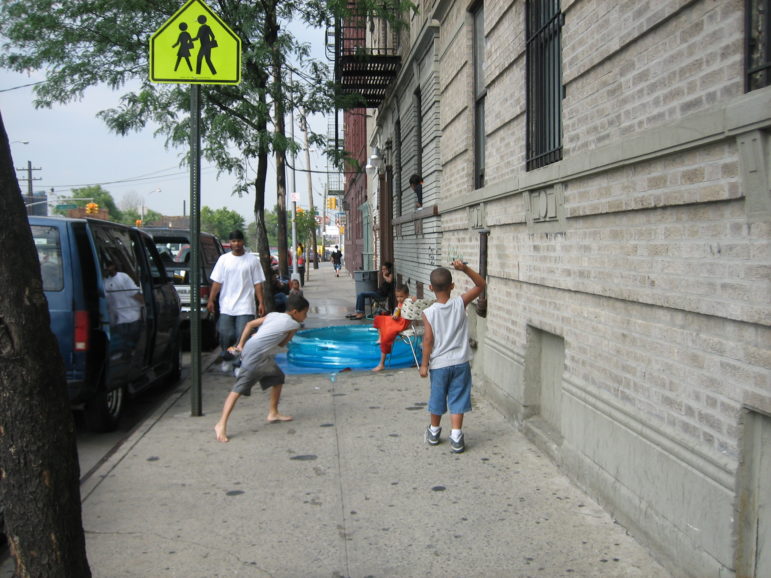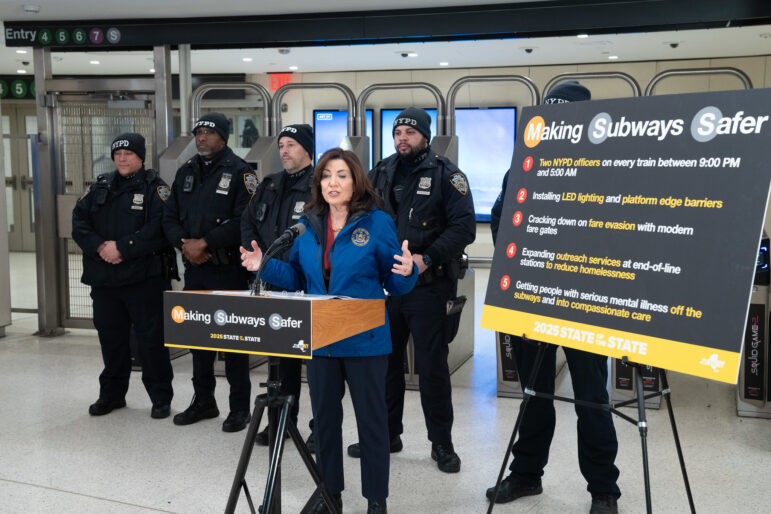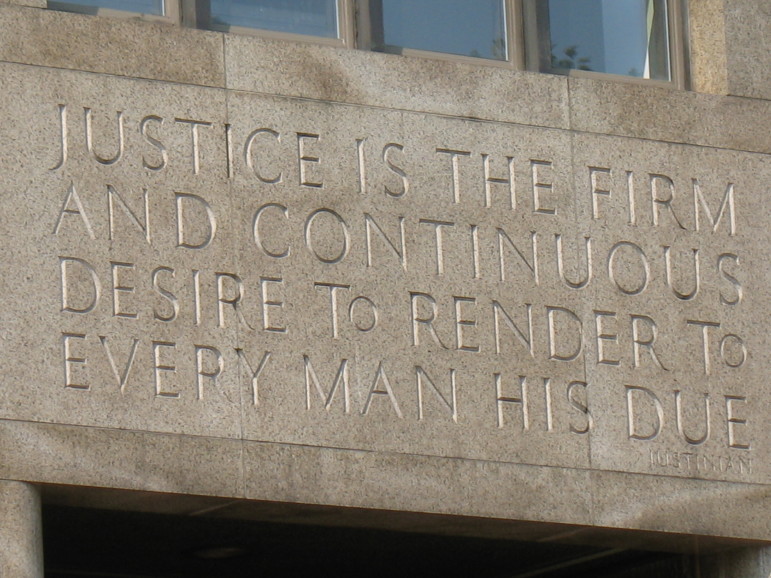
Hi Tricia!
Hunts Point tops the list of vulnerable neighborhoods.
The “Tale of Two Cities” metaphor has shaped the rhetoric of more than one recent mayoral campaign not just because it rolls off the tongue but because it accurately describes the stark disparities between New York’s global elite and, as Freddy Mercury would have put it, the people on the edge of the night.
But the five-borough map of need doesn’t come only in two colors. Some neighborhoods are visibly far better off than others, but among the struggling communities are neighborhoods that face different threats that change over time.
Such is the portrait painted by the latest edition of the Citizens’ Committee for Children’s annual Community Risk Ranking, released Tuesday, which analyzes the city’s 59 community districts across a series of measures, like child poverty, the rent burden, the infant mortality rate, high-school graduation rate, the violent felony rate and youth unemployment.
Familiar neighborhood names—Hunts Point, Brownsville, East New York—are listed among those communities that top the list of most vulnerable. These are places where each socioeconomic threat magnifies the other. “We know from research on child well-being that individual risks matter but it’s the cumulative impact of multiple risks present that have a multiplier effect,” Jennifer March, CCC’s executive director, told City Limits. “If you have four or more risks present in the household the chance of long-term, damaging impact increases ten-fold.”
The districts at the other side of the spectrum where risks are minimal—Upper East Side, Tribeca, Park Slope—are also the communities one would guess are doing just fine. In between the extremes are dozens of neighborhoods where strengths and weakness mix. East Harlem, for instance, faces trouble on most measures but is relatively well-positioned when it comes to housing. Williamsburg, on the other hand, scores well on virtually every statistic, except for economic security.
“I think what the anomalies show, when you look deeper, is that progress is in fact possible,” March says. “The problems that children and families face are not intractable. For example, Washington Heights is typically a higher risk district but they’ve seen dramatic improvement in the health area, and we know that’s because there’s been really a pretty significant increase in health coverage of children in that community.”
And then there are the communities whose profile reflects ongoing change. In Bushwick, housing conditions appear to be improving, while in Bensonhurst, crowding and other housing problems seem to be growing more common. One Brooklyn district, Coney Island, has exhibited a startling deterioration over the past two years:
“…[F]rom 2013 to 2014 … [t]he child poverty rate increased to 45 percent after hovering around 31 percent the previous three years. The parental employment instability rate—the share of children in families where no parent worked full-time in the last year—increased from 24 percent in 2013 to over 50 percent in 2014. Interestingly, when we look at additional data, we see that employment overall in the district did not decrease, but there were changes in employment among families with children.
The citywide picture is generally one of improvement across a number of measures for all ethnic and racial groups, but persistent –and in some cases growing—disparities along racial and ethnic lines. The fact that many districts are being reshaped by development and gentrification complicates the picture, in that the progress shown could reflect improvement in the lives of once-vulnerable people or merely that low-income residents have been displaced, or the statistics skewed, by the arrival of higher-income people.

BRIC-TV
Jennifer March from CCC joined DNAinfo’s Jeff Mays on Monday’s BkLive to discuss the 2017 elections and some of the issues from the COmmunity Risk Ranking that might make their way into the campaign debate. Watch the video here.
* * * *
The Williamsburg district reflects this ambiguity. The increasing risk of economic insecurity there is largely about deteriorating conditions in one of the four neighborhoods, also called Williamsburg, that make up Brooklyn Community Board 1 (Greenpoint, East Williamsburg and Northside-Southside are the others). The Williamsburg neighborhood posts a 64 percent child poverty rate. That could reflect low-income people being concentrated together in a small area by the forces reshaping the larger community. Those low-income residents might be witness to, but not beneficiaries of, the broader, positive changes. “It doesn’t mean things are improving for them just because there is improvement broadly speaking,” says Apurva Mehrotra, the CCC researcher who directed the report.
Hunts Point, the neighborhood found by CCC to be the most at risk, often tops rankings of economic insecurity. Whether or not those reports are helpful, says Jill Roche, “depends on how they’re received and what’s done with the information. It’s not the end point but it’s the entry-point to a conversation.
Roche leads the Hunts Point Alliance for Children, which since 2007 has provided direct service to the Bronx neighborhood and partnered with seven local schools to improve educational outcomes. As massive as the challenges facing Hunts Point are, she sees simple ways to make a real difference in people’s lives—like prioritizing Hunts Point to get street-lighting improvements that are planned citywide. Also important, Roche says, is identifying assets that even neglected neighborhoods have and applying them to making changes.
The notion of compounded risk at the heart of the CCC report makes a lot of sense to Roche. “One of the differences between children in poverty and other children s how wide is their road to a successful adulthood. The greater the amount of risks, the narrower the road,” she says. “For so many of the kids we work with, they’re on a narrow, narrow path. We’re working to make sure that road is wider.”
In recent years the debate about programs to fight poverty has revolved around the question of whether deconcentrating the poor is a key step, or merely a complication, for reducing economic need. New York City embodies both scenarios. There are neighborhoods like Hunts Point where many or most residents are poor. But low-income people also live in relatively affluent community districts. Both face challenges, says March.
“I feel like in both situations you have access issues. In areas where you have large numbers of people who are poor, demand can outstrip supply for some basic things—for affordable after-school, for summer camps, for child care or, actually, even food,” she says. “On the other hand, yeah, if you look at say a neighborhood where there’s a concentration of poverty in a wealthy area, low-income people in those neighborhoods often have to commute far to access things that are affordable—food being one of them.” The focus of city policymakers, especially as a chance to debate the city’s future approaches during the 2017 local election year, has to be on universal programs that target need wherever it exists.
In Hunts Point, changes are afoot—the former Spofford youth detention facility is being redeveloped, and there’s a new MetroNorth station coming in. As in other low-income areas that suddenly see new investment, there’s a concern about “making sure Hunts Point families benefit from any changes,” Roche says, in part by making sure they’re engaged in the process of discussing what new policies might help.








